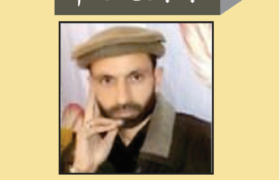The Defence Day of Pakistan has significance in many ways, but national unity and trust between the people and the army is the spirit of 6th September. During 1965 war, people irrespective of sect, language, region or province had demonstrated what Quaid-i-Azam had exhorted – Unity, Faith and Discipline. From Khyber to Cox’s bazaar in former East Pakistan, people paid tributes and lauded the soldiers and officers of Pakistan army, navy and air force for showing the valor and resilience when India attacked our motherland. The coordination of the army, navy and air force from Lahore, Karachi, Run of Kutch to Chamb Jorian, had made all sectors the graveyard of unaccomplished dreams of Indian leadership and army commanders.
Every year, on September 6 the nation pays tribute to the martyrs who laid down their lives while defending their country during 1965 war between Pakistan and India – six times bigger in population and size. This is one of the most important events in the annals of Pakistan’s history when our military officers and soldiers heroically foiled India’s attempt of undermining Pakistan. During 17 days of war, the entire nation was turned into a cohesive unit. Politicians shunned their differences; despite even though nation was divided after presidential election between Mohtarma Fatima Jinnah and General Ayub Khan all political parties and people of Pakistan stood by the armed forces. The national priorities were clear and unambiguous in those days, any danger to the country called for unity and unstinted support to the government and the armed forces. There was no question of any political party or leader taking advantage of the war.
However, war has political, strategic, and tactical sides also that can guarantee total victory or defeat against a worthy opposition. You may win a hundred battles and still lose the war; or lose an equal number of battles yet still win the war. It all depends on how you plan, execute, react, and adapt to the changing dynamics. The 17-day conflict, fought mainly in Kashmir, Sialkot and Lahore sector, ended in a UN sponsored ceasefire with both sides. The war has gained nearly mythical status in both countries with both sides claiming victory for various reasons and is often celebrated in their respective popular cultures. The fact of the matter is that official narratives on both sides of the border are skewed and one sided; both sides have attempted to highlight their respective successes and omitted their blunders and setbacks. But if we go back in history we would find that,Since their independence from the British in 1947, Pakistan and India have clashed several times. The 1965 war wasn’t their first face-off, they had fought, during 1947-1948 to claim Kashmir as their territory. The two countries clashed again on 6th September 1965 when India attacked Pakistan across the international border without a warning or declaration of war.
India’s goal to be a regional power was shredded into pieces when Pakistan army in various sectors including Chwinda frustrated India’s destructive designs. The battle of chawinda has been described as one of the largest tank battles since second world war . Indians intended to take control of the Grand Trunk Road and Sialkot-Pasrur railway, to disconnected the supply line to Pakistani forces but Pak army fought back fiercely, leaving no stone unturned. Pakistan navy had played its part by launching a successful operation Dwarka, when fear from submarine Ghazi kept the enemy at bay and away from Pakistani coasts. Pak Navy’s complete control over the waters despite very limited resources was indeed a miracle. It was for the first time Pakistan Navy participated in India-Pakistan wars and stood victorious. The objective of the operation was to destroy the radar station Dwarka, which was guiding Indian soldiers. Pakistan Air Force had also proved its mettle by continuous air attacks and the Pakistan Army’s resistance for each inch of land was remarkable.
The Defence Day of Pakistan reminds us of the indomitable courage and unmatched sacrifices of our heroes. Today we will recall some of those brave souls who will be remembered and cherished by us as a nation and who proved the world that Pakistan is unassailable.
Sepahi Maqbool Hussain
Sepahi Maqbool Hussain was a Pakistani soldier who is known for his capture and brutal imprisonment for four decades in Indian jail. He got wounded during the war of 1965 and was taken as a prisoner by Indian troops but the Indians did not register his legal status as a prisoner of war, stripping him of certain rights. While in the custody of Indian forces, Hussain was notoriously subjected to severe torture by Indian army. He was asked to give any information he knew so that they could jeopardize Pakistan’s security but he remained defiant. He was regularly harassed and put under pressure to insult his nation with various phrases such as Pakistan Murdabad, to which he actively responded with Pakistan Zindabad each time. To get the information about Pakistan, they tried every possible way. They did all sorts of mental and physical torture, but they could never break Maqbool Hussain’s resilience. His persistent refusal angered them even more, and their barbarity extended to the level that one day they cut off Hussain’s tongue and rip his nails off but the brave son of soil started writing Pakistan Zindabad on the walls of Indian jail with his blood.
Finally, after 40 years, he was released in 2005 during a prisoner exchange between India and Pakistan at the Wagha border. He had already lost his senses due to the ruthless torture he faced in the Indian jail. Therefore, whenever he was questioned about his identity, he kept replying by writing: “No. 335139”, which was his army bearing number. After inquiry, Hussain’s service in the War of 1965 was discovered. On 23 March 2009, Sepahi Maqbool Hussain of the Azad Kashmir regiment awarded the Sitara- e -Jurat for the acknowledgment of his sacrifices.
M.M Alam (Muhammad Mahmood Alam)
M.M Alam joined the PAF in 1953. Alam, nicknamed as ‘Little Dragon’ .During 1965 war he made unforgettable history by knocking down five Indian Air Force (IAF) jets in less than a minute which is a world record in shooting most jets in the shortest time till day and altogether, he destroyed nine warplanes in the aerial combat of 1965 war. For the exceptional flying skill and valor, he was awarded Sitara e Juraat.
Major Fakhr e Alam
KP(the then NWFP) also take part in 1965 war with zeal and enthusiasm and confront the enemies on the front line, making us proud of them. We have heard stories of bravery and loyalty about them but they have lived those stories.
Major Fakhr e Alam was such a hero who got martyred in the war of 1965. He was leading the unit of soldiers who were in the front line in Kashmir. During the fight between both side soldiers, Pakistan had pushed back the Indian troops successfully from their position. As major Fakhr e Alam was going further to combat the Indian troops and checking out the battle field ,meanwhile a bomb struck by the Indians ,cut off his hand from his body .Despite of being injured he encouraged the soldiers to fight fearlessly .He told his fellow soldiers to buried his cut hand and not to leave it for enemies. His injury was severe and he was bleeding constantly but he didn’t lose courage. After giving first aid, he was taken to the hospital, where he was continuously worried for his soldiers and asking doctors that after recovery, he will get back to the battle field but he couldn’t recover from that injury and attain a high level of martyrdom.
Fakhr e Alam belongs to Peshawar. There is also a road in Peshawar by his name that is Fakhr e Alam road.
Capt.Abdul Jalil Orakzai
“If I died, I want to die like a soldier fighting in battle field with enemies”, these are the words and wish of a Abdul Jalil that he told to his younger brother.
Abdul Jalil belong to Bhanamari ,Peshawar.He got Secondary School Certificate (SSC) in 1947 and Bachelors (BA) in 1953. He was a good athlete and made record in Pole Vault jump in inter collegiate sports. He was also Secretary / Member of Athletic Team and Proctor in Edwards College Peshawar 1951 -1953. In 1954 he went to University of Peshawar for Masters in English, completed his part one but missed Final Exam due to army duties.
His last wish was fulfilled when he got martyrdom during 1965 Pak-India war in place of Kaali Dhar, Kashmir, in an effort to capture Indian security posts. His body was handed over to family in March 1966 after recovered from India. His body was identified by his closest friend Dr. Muhammad Ali Malik (Dental Surgeon) from that gold tooth which was implanted by him.
He is buried in an Orakzai Qabristan, Nothia, Peshawar.He was awarded Sitara e Jurat the third highest military award of Pakistan due to his supreme sacrifice in order to safeguard the honor and dignity of the nation.



